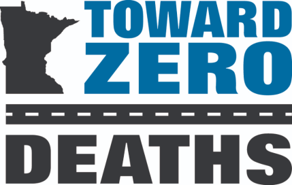Traffic Signs
Traffic signs are an important traffic control device. They inform drivers of regulations (law), warn drivers of hazards and guide drivers to their destination. All traffic signs must be in conformance with the Minnesota Manual on Uniform Traffic Control Devices.
The Minnesota Manual on Uniform Traffic Control Devices states that traffic signs should meet the following five requirements:
- Fulfill a need for traffic operations or safety
- Command the attention of drivers
- Provide drivers a clear and simple meaning so they understand what to do
- Ensure the driver can plainly see the actual condition for why the traffic sign is installed
- Be placed in such a way as to provide adequate response time for the driver to react
A key approach to accomplish these basic requirements is through a conservative use of traffic signs. A conservative use of traffic signs not only reduces maintenance costs but also is understood to improve the effectiveness of those remaining traffic signs, which cumulatively improves traffic safety for all users.
STOP signs are one of the most recognizable traffic signs. Like traffic signals, STOP signs assign right-of-way to vehicles entering an intersection. The use of STOP signs must be in conformance with the Minnesota Manual on Uniform Traffic Control Devices. In most cases, STOP signs are an important traffic control device to control traffic and improve traffic safety. However, in some cases, STOP signs are overused in inappropriate locations. This overuse of STOP signs has led to an overall decrease in respect by drivers.
STOP signs should never be used as a method to control traffic speeds. This improper use of STOP signs leads to inconsistent expectations for drivers.
Research has shown that at low volume intersections, there are no safety benefits associated with increasing the level of intersection control; uncontrolled intersections actually have the lowest frequency of crashes. The majority of residential intersections in the city are uncontrolled because of the low volume of traffic. Drivers should approach uncontrolled intersections prepared to yield to other vehicles. Minnesota Statutes 169.20 states when two vehicles enter an uncontrolled intersection from different highways at approximately the same time, the driver of the vehicle on the left shall yield the right-of-way to the vehicle on the right. At an uncontrolled approach to a T-shaped intersection, the driver required to turn shall yield to the cross traffic.
Below is a video that talks about why we have stop signs on residential roads.
Special warning signs typically include CHILDREN AT PLAY, BLIND DRIVEWAY/INTERSECTION, Deer Crossing or Playground warning signs. These special warning signs warn drivers of conditions that are infrequently encountered. Unfortunately, these warning signs have been shown to not be effective at changing driver behavior. Therefore, these special warning signs provide a false sense of security for those depending on the sign. At best, these special warning signs provide no traffic safety benefit. At worst, these special warning signs may actually decrease traffic safety due to the false expectation that drivers will change their behavior. In most cases, the best action is to maintain a high level of personal vigilance.
The City of Duluth does not install special warning signs because these warning signs do not provide a traffic safety benefit.
Below is a video about ineffective specialty warning signs (What’s the harm?)
